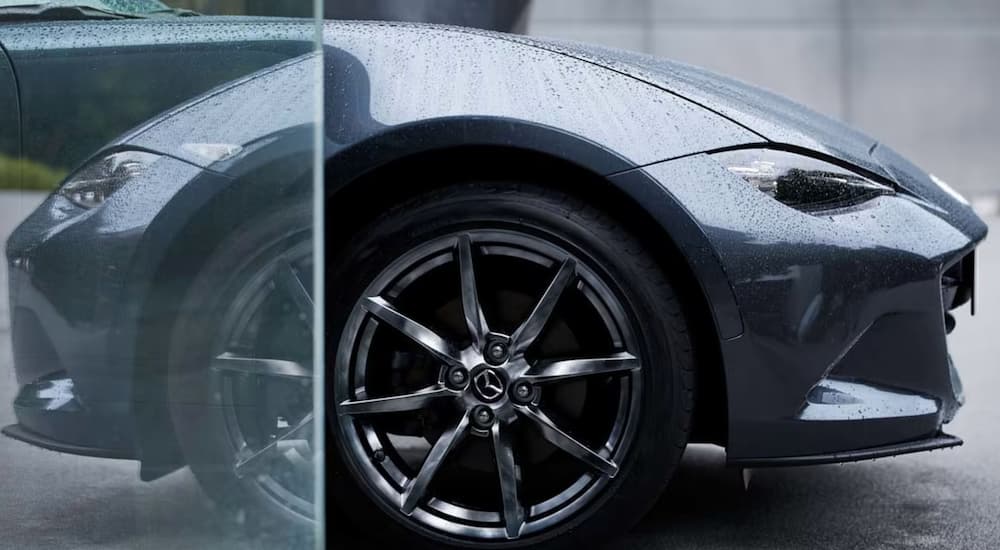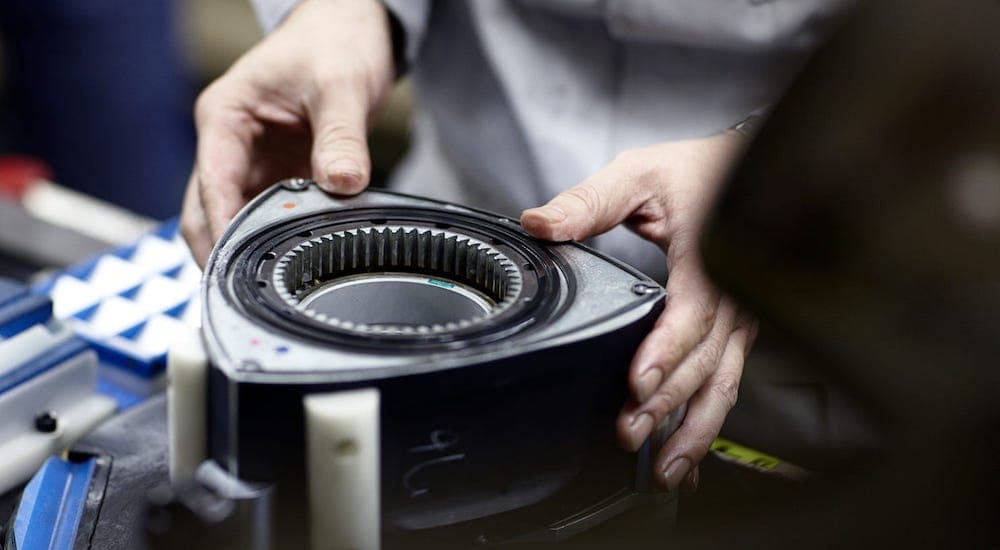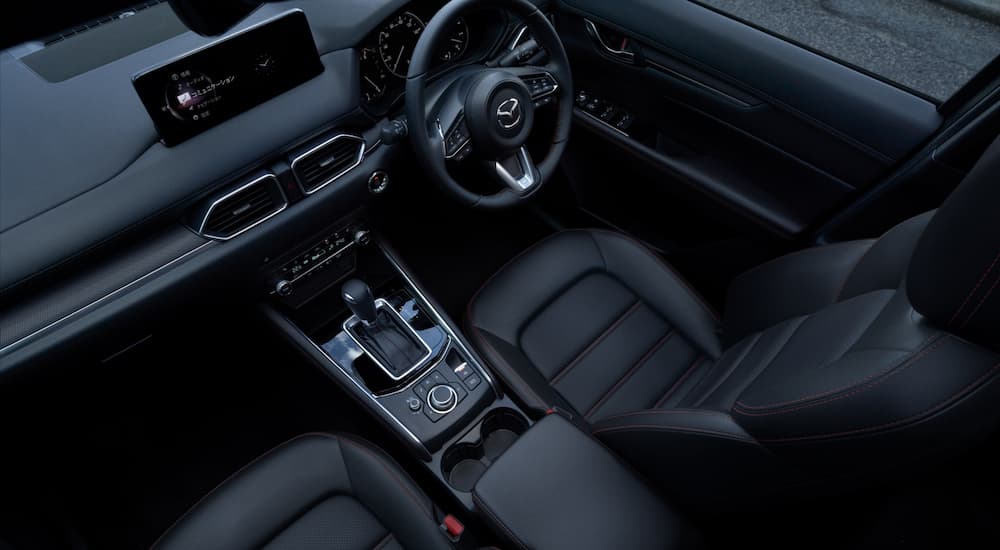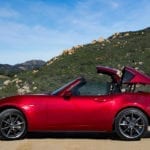For many drivers, Mazda is simply a Japanese car company with a long reputation for reliable vehicles that are also quite fun to drive. But this smaller brand has a fascinating history to match its exciting lineup. Before you head to your favorite Mazda dealer to buy your next vehicle, here are seven things you might enjoy knowing about this storied car company. Mazda has been around a lot longer than many people realize and has been through some things that would demolish many other companies, including surviving a nuclear bomb!
#1 – The Company is More than 100 Years Old
We often think of American car companies going back a long way, with Ford and GM being some of the oldest brands in the world, but they’re far from the only ones. While the Mazda name wasn’t in use quite that long ago, the company that would eventually become the modern Mazda Motor Corporation started all the way back in 1920. It was originally named the Toyo Cork Kogyo Company and, as the name suggests, was a cork manufacturer. The company got off to a rocky start, barely escaping bankruptcy during its formative years. However, things began to turn around when it expanded its manufacturing beyond corks to machine tools, eventually introducing its first vehicle and the Mazda name.
#2 – The Mazda Name Comes from Zoroastrianism
In 1931, the Toyo Kogyo Company (“Cork” was dropped from the name in 1927) made its first vehicle: a three-wheel light truck––it just needed a name for it. At the time, the company was run by a man named Jujiro Matsuda, who took over during its financial struggles and helped lead it away from the floundering cork industry and into more profitable manufacturing. In one sense, the “Mazda” name was chosen because it sounded like “Matsuda” (the two are pronounced the same in Japanese) and was intended as a way of recognizing his work in correcting the future of the company.
Beyond that, the name Mazda was chosen for the company’s first vehicle as a tribute to Ahura Mazda, the creator deity in the Zoroastrian religion. Zoroastrianism is one of the oldest religions in the world and was the state religion of ancient Persia––what is now Iran. As part of the oldest religions in Asia, the Mazda name was chosen as a way to connect with both Eastern and Western civilizations. The name “Mazda” is literally translated as “wisdom,” but it is also meant to symbolize harmony and peace among people in society and the auto industry.
#3 – Mazda Survived the Atomic Bombing of Hiroshima
From its very beginning, the Toyo Cork Kogyo Company was based in the Japanese city of Hiroshima, and it remained there as it struggled and developed into a larger manufacturing company. Like most other companies during the Second World War, its production efforts went into supporting the military throughout the conflict. Its location in Hiroshima wouldn’t be particularly noteworthy until August 6, 1945, when the first atomic bomb was dropped on the city by the Enola Gay at 8:15 AM.
Prior to the detonation, the city of Hiroshima had a population of about 255,000 people. At least 70,000 people were killed directly by the blast, and around 70% of the buildings in Hiroshima were destroyed. The devastation was indescribable, but at that moment, the Toyo Kogyo Company stepped forward to help recover and rebuild. Because its factory was located on the outskirts of the city, the company miraculously survived the bombing unscathed.
In the immediate aftermath, the company began distributing medical supplies, set up locations throughout the city to help families find each other, and offered its facilities as a hospital and to shelter the local government. In the years that followed, the Toyo Kogyo Company became a major part of helping Hiroshima rebuild and recover. Today, Hiroshima has a population of nearly three million people, remains the headquarters for Mazda, and is a standing symbol of human perseverance and hope for peace.
#4 – Mazda Owes Its Success to the Rotary Engine
Although Mazda’s engineers didn’t invent the rotary engine, there’s no denying that they embraced it more than any other car company. In 1929, a German engineer named Felix Wankel patented his design for the first rotary engine and single-handedly continued developing it for decades after, completing a working prototype in 1957. Mazda’s engineers saw the potential in the Wankel engine and began developing their vehicles to utilize the unique powertrain, resulting in the release of the Mazda Cosmo in 1967. Mazda immediately made a name for itself by using these engines, which could produce impressive power and weighed less than the four-cylinder and six-cylinder engines used by its competitors.
#5 – Mazda Had a Long-Term Partnership With Ford
For about 40 years, Ford had a direct interest in Mazda and was a major part of their development and growth here in the US. Mazda had financial difficulties in the 1960s and was struggling to grow, which resulted in a partnership beginning to develop toward the end of that decade. In 1971, Ford and Mazda began cooperating, and the Ford Courier was based on the platform and engineering of the Mazda B-Series. The B-Series and Ford Ranger remained connected through a shared platform for decades to follow.
By 1974, Ford began buying shares in Mazda, which grew quickly. By 1979, Ford had a 24.5% stake in Mazda. Ford continued to use Mazda platforms for its vehicles here in the US: models like the Ford Escort and the Ford Escape were based on Mazda designs. This relationship also worked in reverse, with Mazda selling the Ford Festiva as the Mazda 121 in some markets. By 1995, Ford had 33.4% ownership of Mazda, which marked the height of their partnership and Ford’s interest in the Japanese car company.
In the latter half of the 1990s, Ford’s leadership helped Mazda grow and become more profitable––Ford’s increased stake was a direct result of more financial difficulties at Mazda. During the financial crisis of the mid-2000s, however, Ford began looking for ways to cut costs, and in 2008, Ford sold most of its stake in Mazda. In 2010, Ford further reduced its stake in Mazda to just 3%, though the two companies remained partners and continued working on joint ventures. Finally, in 2015 Ford sold its remaining shares and is no longer directly invested in Mazda.
#6 – Mazda Almost Launched a Luxury Brand in the US
Many Japanese car companies have followed the trend of American companies and launched luxury brands selling high-end models. In much the same way that Ford has Lincoln, companies like Toyota, Honda, and Nissan have Lexus, Acura, and Infiniti. Mazda has several brands it has utilized in Japan, including Autozam and Eunos, but it has never had more than one brand here in the US. Mazda began planning a luxury brand for the American market in the early 1990s and started developing “Amati” models that included a midsize sedan with four-wheel steering and a full-size sedan with a V12 engine. Mazda ultimately canceled its plans before any of these Amati vehicles hit the market.
#7 – The Mazda Logo Represents Growth
If you’ve seen the modern Mazda logo and thought it looks like wings, that’s because it does. The logo it has been using since 1997 is designed as a pair of wings that create a letter “M” within the oval around it. This M stands for Mazda, of course, and the wings are meant to symbolize the brand’s desire to “pursue ongoing improvements to drive powerful, continuous growth.” They also represent Mazda’s “flexible thinking, creativity, and resilience.” If you have often wondered why the logo looks like a seagull––now you know. It’s impressive to see such determination and innovation from a single company for more than a century; you can’t help but wonder what the future holds for them.






